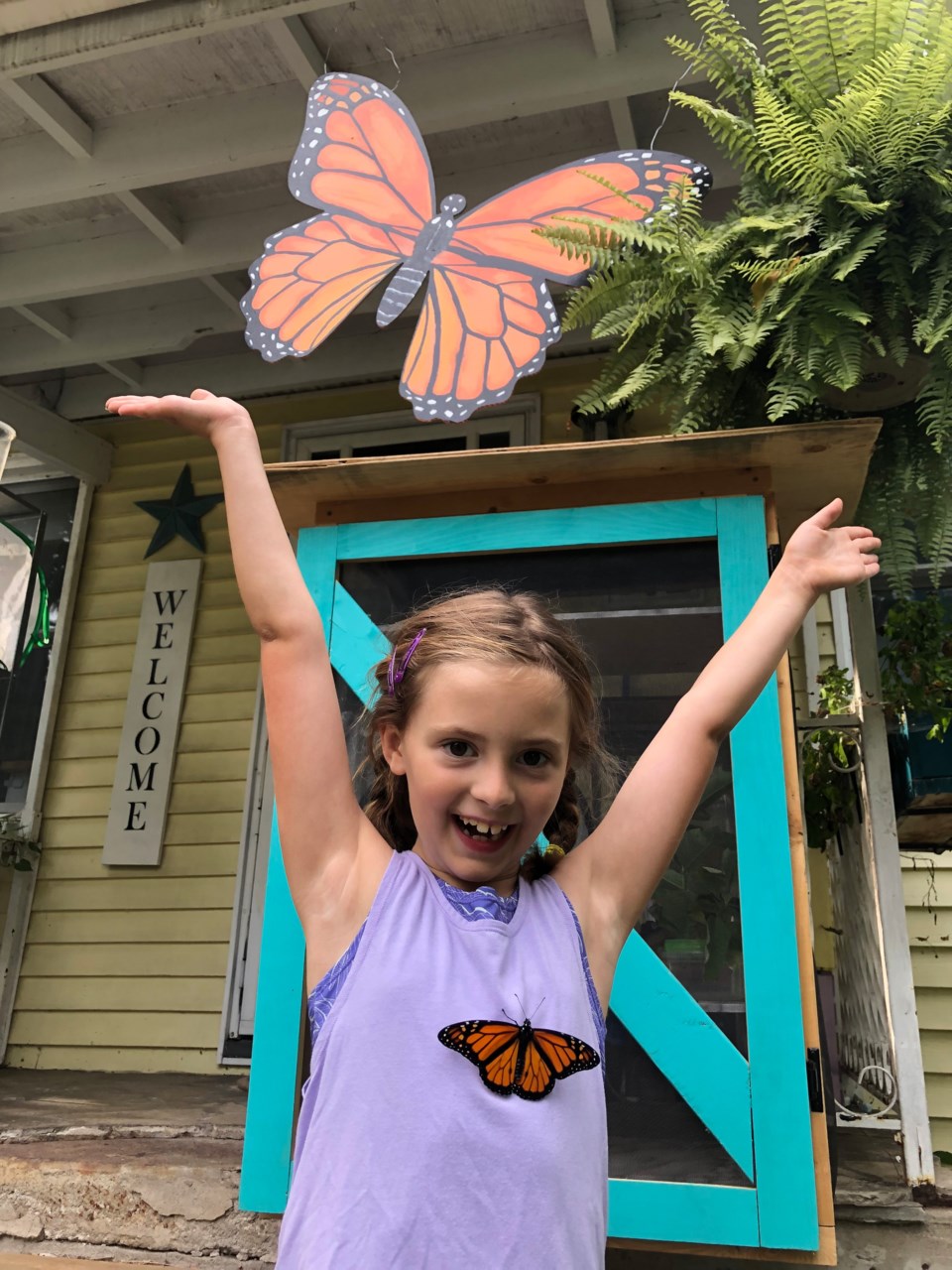NEWS RELEASE
MORGAN'S MONARCHS
*************************
Morgan Mansfield was off to a flying start for her first week of school this week where she tagged and released a monarch butterfly that emerged from a chrysalis she brought to school.
Morgan, 7, spent her spring and summer rescuing monarch eggs and caterpillars from milkweed that gets mowed down in her neighbourhood. In June the young naturalist spotted a female monarch laying eggs, and since then she has raised and released just over 100 healthy monarch butterflies with the help of her family.
“They’re very close to endangered,” says Morgan.
Monarch butterflies are listed in Ontario as a species of special concern. They have declined so rapidly that they may be extinct in 50 years. “I’ll be 57 by then," she said.
“People don’t realize how important milkweed is to these butterflies. The butterflies lay their eggs on milkweed because it is the only thing their caterpillars eat and it’s what makes them poisonous to other animals," Morgan explained.
"But if the milkweed is mowed down, the eggs and caterpillars that are on it aren’t likely to survive. That makes me sad because the monarchs are already suffering because of pesticides and not finding milkweed in some places.”
The rescue has become a family endeavour. Morgan’s grandpa built her an outdoor enclosure to house larger caterpillars. Family walks turned into milkweed checks and harvesting. “Even my little brother helps!”
Tiny caterpillars were housed in individual containers to prevent disease spread, before being moved to the larger enclosure. Chrysalids were moved to special netted enclosures so the emerging butterflies couldn’t spread diseases to caterpillars.
“At one point it was taking over two hours daily for Morgan and me to care for them,” said Morgan’s mother, Gavy Swan-Mansfield. “We joined the Toronto Entomologist Association so that we could be added to their monarch rearing permit and have access to information on best practices.”
“We even got a little keyboard vacuum to make it easier to clean their poop because they poop a lot,” giggles Morgan.
The effort spread to friends, too. Friends across the street helped release butterflies. Other friends raised caterpillars of their own.
Highlights of the year included saving a hatchling caterpillar from milkweed that had been mowed down.
“It was on a dry, crumpled leaf, covered in sand, so we called it Sandy!” and performing a wing transplant on a butterfly whose wings dried bent. “She flew away the next day!”
Now the season is winding down as the monarchs migrate to Mexico to overwinter.
“We got these tags from Monarch Watch,” Morgan explains in a video on her Facebook page, Morgan’s Monarchs. She applies a tag to each butterfly before releasing it.
The tags help scientists to track which butterflies make it to their overwintering grounds in Mexico, and can help provide crucial data about monarch migration biology, that can help with conservation efforts.
Morgan and her family keep track of each rescue on a spreadsheet. The butterfly Morgan released at school was #102, and was found as an egg just up the street, in the ditch.
“We knew it would close soon, since it had been a chrysalis for 10 days,” explains Morgan. On the third day of school it emerged just before class. Morgan showed her classmates how to tag a butterfly before releasing it. “It was a female. I had a bit of trouble tagging her because she was fluttering a lot. I hope she makes it all the way to Mexico!”
What would Morgan like to change?
“Raising Monarchs is fun but it is a lot of work and it is better for the butterflies to be in nature. We want to get people to grow milkweed in safe places like their gardens, where it doesn’t have to be mowed down," she said. "That way any monarchs we find on milkweed that gets mowed can be relocated but stay free and in the wild.”
*************************
